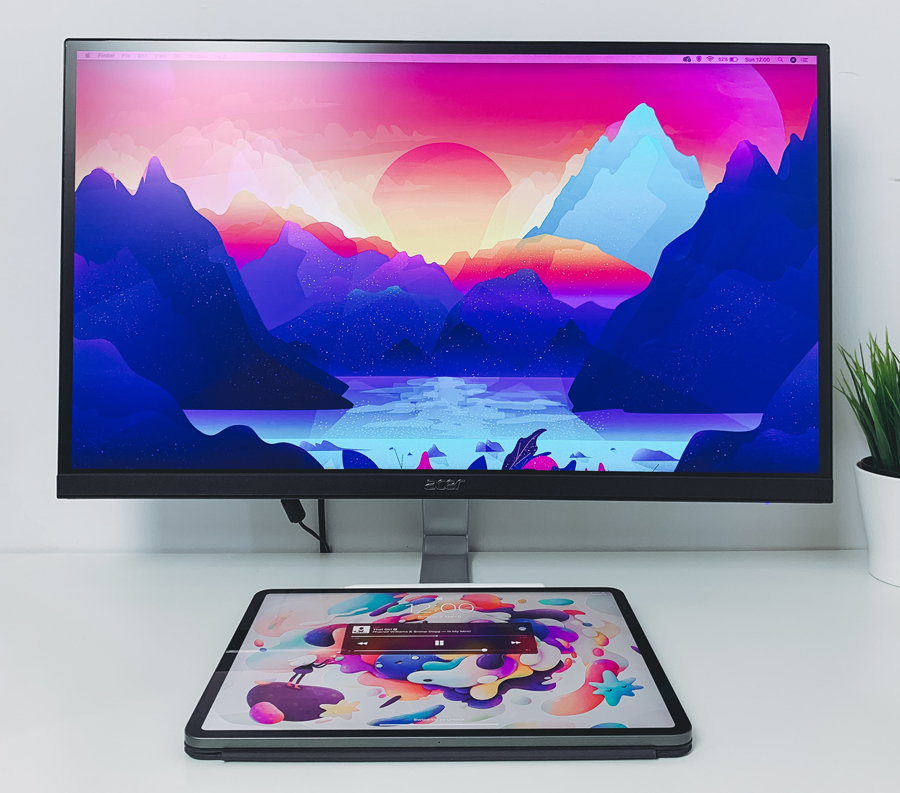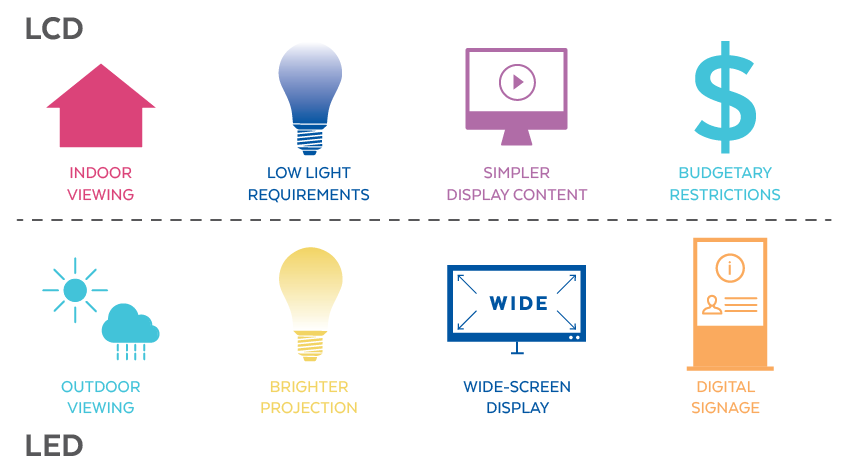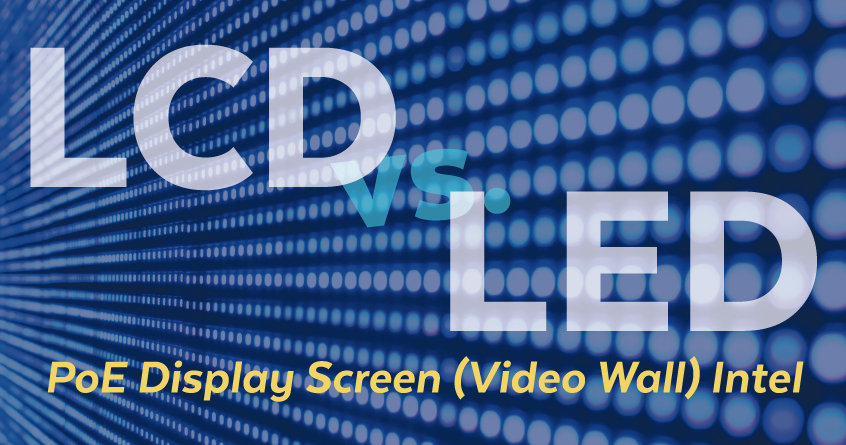To allow remote access to IT networks in public buildings, transportation hubs, commercial settings, academic institutions, and other venues, hardware developers have prioritized making their display screens Power over Ethernet (PoE)-compatible. PoE technology provides convenient support for display screens in a variety of situations.
In today’s article, we’ll discuss PoE displays and the difference between LCD and LED technologies.
What is Power over Ethernet (PoE)?
PoE technology allows both power and data to be delivered via a single Ethernet cable. Each cable carries data and power to PoE devices via bundled copper wire pairs.
PoE requires no electrical installation, saving money and simplifying remote access for content providers. The versatility of PoE makes it an ideal solution for display screens.
What is a PoE Display Screen?
Digital display screens are mounted on the walls of many public places where people need access to information. Airports, malls, college campuses, and large commercial buildings rely on display screens to deliver content to their visitors. A video wall refers to any number of display screens hung in a rectangular grid or other pattern.
A PoE display screen uses one connection to receive content and power. PoE-powered displays can be hung virtually anywhere because they don’t require proximity to electrical outlets. End users can perform a low-cost installation using a single Cat6 cable. As Cat6 and Cat6A cables both use four wire pairs, these cables can provide more than enough power and data.
What Does a PoE Display Screen Do?
A PoE display screen can serve many purposes. Not only can they deliver essential information with ease, but they can also provide ambiance and entertainment. For example, display screens are frequently used to create visual atmospheres in public places and hard-to-reach areas that may not have electrical power installed.
PoE display screens can be used virtually anywhere, including on outdoor walls. Public transportation arrivals and departures, traffic directions, stock exchange tickers, building directories, and billboard advertisements can all be displayed electronically on PoE-powered displays. One could, for example, exhibit a full-length feature film across a series of PoE screens mounted on a wall, either indoors or outdoors.
PoE display screens provide electronic network or web-based display without the need for separate electrical power.
What are the Two Main Types of Display Screen Technology?
Display screens fall into two categories.
LCD
LCD stands for liquid crystal display. These lightweight, flat-panel display systems use liquid crystals combined with polarizers to produce images in either color or monochrome. LCDs produce color by allowing light to pass through aligned crystals. LCD screens are particularly useful for displaying preset words, digits, and seven-segment displays, such as on a digital clock face.
Popular applications for LCD screens include:
- Computer monitors.
- Laptops.
- Tablets.
- Televisions.
- Smartphones.
- Digital cameras.
- Car dashboards.
- Digital clocks.
LCD has a long operational history as a stable and dependable technology.
 LED
LED
LED screens use light-emitting diodes (LEDs) as pixels in the video display. Each LED is a small semiconductor that emits light when an electric current is applied to it. The screens work by controlling the amount of current delivered to each LED.
Some applications for LED screens include:
- Digital signage.
- Outdoor advertising.
- Computer monitors.
- Televisions.
- Video walls.
LED screens are used in situations that demand brightness and visibility in a variety of lighting conditions.
 What are the Benefits of Each Type of Display Screen?
What are the Benefits of Each Type of Display Screen?
Both LCD and LED display screens have their benefits.
Because of a higher pixel density, an LCD will produce a higher resolution image in the same display area. LCD whites are very white, and LCD blacks appearing in the displayed image will be very black due to the high contrast ratio. LCDs consume very little power, making them energy efficient and cost-effective. With crisp and clean images, LCDs are perfect for up-close advertisements in indoor settings, security operations centers, and other applications where fine details are important.
Better suited for outdoor applications, LED screens can be very bright. They can last for many years, but they tend to be more expensive than other types of displays, such as LCDs. LED panels can interlock seamlessly, creating a larger, unified display without indicating multiple panels. This makes them ideal for outdoor advertising and video walls.
While there are some applications where either LCD or LED could work, the best fit will be determined based on user experience and cost requirements.
How to Determine if LCD or LED is the Best Fit
Deciding between an LCD or LED PoE display system comes down to specific needs. The required viewing distance, the location of the screen, as well as an indoor versus an outdoor setup, are all factors worth considering.
An LCD screen is the best option for:
- Indoor viewing.
- Lower light requirements.
- Simpler display content.
- Budgetary restrictions.
While LCDs have a few disadvantages, like a limited color gamut, the technology continues to improve while remaining cost-effective.
 An LED screen might be preferable for:
An LED screen might be preferable for:
- Outdoor viewing.
- Brighter projection.
- Wide-screen displays.
- Digital signage.
LED screens tend to last longer, but they cost more and can suffer from motion blur and black uniformity issues. Sometimes fast-moving objects will appear blurry or black levels will be uneven across the screen.
When LED panels fail or are damaged, replacement panels should come from the same batch as the surrounding video wall so that all the screens will match. For this reason, buying a high percentage of spares upfront is recommended when purchasing a video wall, which can further increase the cost. LCD panels can be replaced with panels from different production runs without causing notable disruptions in brightness or color.
PoE for Your Display
Versa Technology provides cutting-edge PoE equipment to support display screens of all sizes and types in virtually any location. We can supply your project with any of the following:
- Switches.
- Injectors.
- Extenders.
- Splitters.
- Media converters.
Contact us today to discuss your project. We can offer a comprehensive portfolio of PoE products and solutions.

